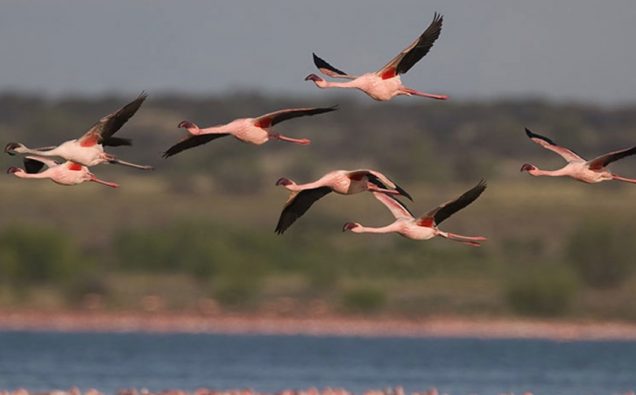
With the beginning of fall, the season for bird migration is here with us, and with it many migratory birds fly to favorable climes. Among these flamingos stand out for their large size for their rose-colored pink appearance.
The local people and birders love to watch flamingos along the riverbanks and fly over their towns.
Lately, the bird has been in the news from the United States to Central Asia.
In a recent report, Valley Central said it is only for the ninth time in its history that the Texas state recorded a wild flamingo at the wetlands of the Laguna Atascosa National Wildlife Refuge.
“I saw an American flamingo out here in Laguna Atascosa… deep in the refuge here out in the expansive wetlands… incredible!”, said naturalist Javi Gonzales, who works with the South Padre Birding Nature Center and Alligator Sanctuary and spotted the pink bird at the refuge.

And a world apart in Central Asia, the people of Kazakhstan celebrated the return of the exotic bird after five years of absence.
As pink flamingos flocked back to Kazakhstan’s capital, Nur-Sultan, the residents took their pictures and stories of excitement to the social media.
According to a UN report, the birds have been flocking to Maly Taldykol, a small natural lake in the center of the city, attracting admirers from nearby high-rise buildings and all around.

Historically, the world body says, pink flamingos, pelicans, and other migratory birds, have chosen nesting sites in lakes in the Korgalzhyn State Nature Reserve, part of a UNESCO World Heritage site, roughly 130 kilometers southwest of the capital.
But the Kazakh capital is just a stopping point on their long journey south.
The UN says approximately 2,000 of the world’s 11,000 bird species migrate, with some covering enormous distances, using broad pathways known as flyways which span multiple countries.
The world body marks World Migratory Bird Day on October 9 each year.
“Migratory birds bear witness to and are impacted by, the triple planetary crisis of climate change, biodiversity loss, and pollution,” says Inger Andersen, head of the UN Environment Programme.
“Making progress on reigning in climate change and ending biodiversity loss is critical to the survival of migratory birds. The journey of a migratory bird knows no borders and therefore, neither should our response to the planetary crisis.”
Although flamingos are not rated as endangered species, now and then news stories of their being killed crop up, worrying Nature lovers and bird watchers. Since migratory birds know no boundaries, it is for all countries to take special care of the birds when they flock to their lands.












